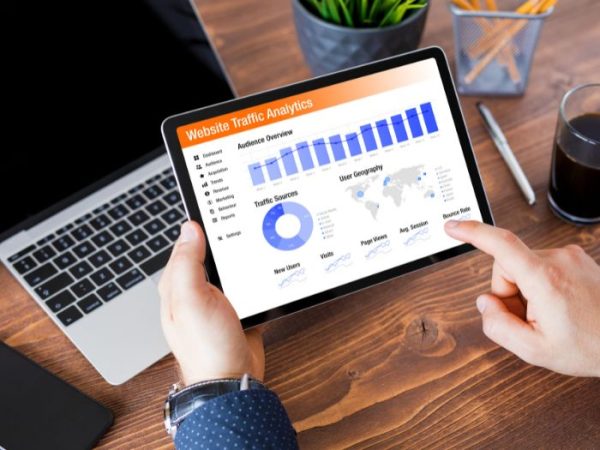The ‘How did you hear about us?’ question is as old as marketing itself.
And there’s good reason—knowing how customers actually find you is super valuable.
👉 With this data, you can
- Optimise marketing and advertising
- See what’s working and what isn’t
- Ultimately, save and make money (often, a lot of it)
So, how did they hear about you? Word of mouth? Facebook or online ads? Drove past, walked past? Google? Can’t remember?
Likely the last.
UNFORTUNATELY, getting this data is notoriously tough and unreliable as almost no one remembers, or even realises, how they first hear about a business.
How did YOU first hear about Qantas? How about Apple, Nike or even your local dentist? How about us, HeartBeat Digital?
We investigate:
- The problem with asking how customers heard about you
- How to actually find the answers
- What to do with the data

The problem with asking how customers heard about you
Imagine you visit a newly established medical clinic. You’re a little nervous; unfamiliar doctors, the diagnosis, treatments and costs.
Upon arrival, a receptionist gives you an official-looking clipboard asking for personal details, including an emergency contact.
After completing the form, and wondering if you’re allergic to any medication you don’t know about, you find another question at the bottom:
How did you hear about us?
Most people aren’t going to remember this insignificant piece of information—let alone bother in a nerve racking situation.
▢ Google
▢ Flyer / billboard
▢ Social media
▢ Radio
▢ Family or friend
✔️ Other (please provide details): ______________.
The problem is that these surveys want people to unwind a series of events, something nearly impossible.
When it comes to SMEs and small chains, our research shows a common journey
ONE Recognition
The journey begins when a customer realises they have a problem, need or want.
Someone might develop a recurring stomach ache, need a haircut or simply want a specific type of cuisine.
For local businesses, new customers often remember locations from commuting past each day.
TWO Information Search
Research shows that 97% of people look online when searching for information; search engines, social media, local directories and online reviews. Some also turn to recommendations from friends, family, or colleagues.
This stage is crucial for local businesses to ensure their presence is visible and information is readily available across these platforms.
THREE Evaluation of Alternatives
During this stage, customers compare and evaluate options.
They again read reviews, visit websites, check social media profiles, or even physically visit local businesses.
Local businesses need to provide detailed information about their offerings, unique selling points, and showcase their value above competitors.
FOUR Purchase Decision
After evaluating alternatives, customers make a purchase decision.
Factors influencing their decision include:
- Price
- Quality and convenience
- Brand reputation
- Customer reviews
- Personal preferences
Local businesses can sway this decision by offering competitive pricing, incentives, promotions, or exceptional customer service.
The most effective way of doing this is through a strong online presence.
So, how did you hear about us?
“I first drove past seven years ago”—probably not the answer you’ll get or expect.
The answer needed is when and how the customer first considered making a purchase and not when they first heard about you.

How to actually find the data
“…roughly 97% of people who use online search, look for local businesses.”
Digital marketing and online analytics are powerful tools that help businesses track customer behaviour and determine where they come from.
Since these analytics don’t rely on human memory, and instead use a record of clicks, timed engagements and interactions online, they are superbly accurate.
Here’s how it works:
Online analytics mean collecting and analysing data from a website or digital marketing campaign to gain insights into user behaviour.
This data details where customers are coming from (e.g., Google search, Google Maps, social media, other websites like TripAdvisor), how they interact with a website, and what actions they take.
Analytics tools, like Google Analytics, can track a user’s journey from the moment they arrive on a website, showing which pages they visited and how long they spent on each page.
Data entries come from tags or code within a web page’s URL. This code is different depending on where the link to the URL is, for example the same page may have different codes for where it’s displayed:
- In a marketing email
- Online ads on another website
This means you can see traffic sources and volume to the same single page of your website, then break that down into dates, times and duration.
🤔 Imagine in pre-internet times, being able to see what suburbs customers come from and what routes they take. You’d naturally put up billboards on streets with the most traffic to your business.
Online analytics in cahoots with digital marketing
By combining digital marketing and online analytics, we can determine where your customers are coming from.
For example, if you run an ad campaign on Google, we can track which keywords are generating the most clicks and conversions.
If someone clicks on your ad displayed on a third party website, like a news website or forum for example, it’s recorded with a time stamp.
With this data, you can see how many people are coming through to your website from a particular ad on a particular day and time.
Low numbers might mean changing or even scrapping the ad, high numbers might mean more of the same type.
The socials play a role too
We can use social media analytics tools to see which posts are driving the most traffic to your website as well as getting an idea on demographics and day/time of interactions.
For many local businesses, social media is a massive channel for new and repeat customers, so these analytics are extremely important.
There are big numbers at play
According to data and research organisation, BusinessDIT, roughly 97% of people who use online search, look for local businesses.
Furthermore, Statista puts Australia’s active internet users at 91% of the population, (23.97 million of us).
FYI, the US sits at around 93%.
Put simply, online analytics are based on recorded facts and cover nearly every customer.
The visualisation piece
Going back to the medical clinic example above, staff in that situation are left with piles of patient paperwork to sift through.
This can make it tough to visualise, but not with online analytics.
Online, you can expect shareable graphs and charts with clear colour coding, things that from our experience, make it much easier to see where your customers are coming from—and where they aren’t.

What about the customers who don’t hear about you online?
Of course, there are some customers who don’t find a business online. Sticking with SMEs and small chains, our research points to three typical categories: impulsive customers, long-term regulars and immediate family of existing customers.
The latter two can be great advocates for businesses, but typically result in small or limited channels for new business.
Make business decisions based on factual data
With accurate, clean data explaining where your customers are coming from, you’ll be able to make confident decisions.
For example
High traffic on social media: increase ads, polish your posts and look at ways to increase engagement, like competitions or sharable content.
High volume from Google Maps (e.g., people are calling you via your Google My Business profile or searching for directions): ads targeting location might offer high return.
High search volume: search ads would work well and your content may need adjusting to suit people in the research phase.
Whatever your data shows, it’s likely to be hugely beneficial.
Get started. Find out how people are actually hearing about you, along with all the other data that online analytics provides.






